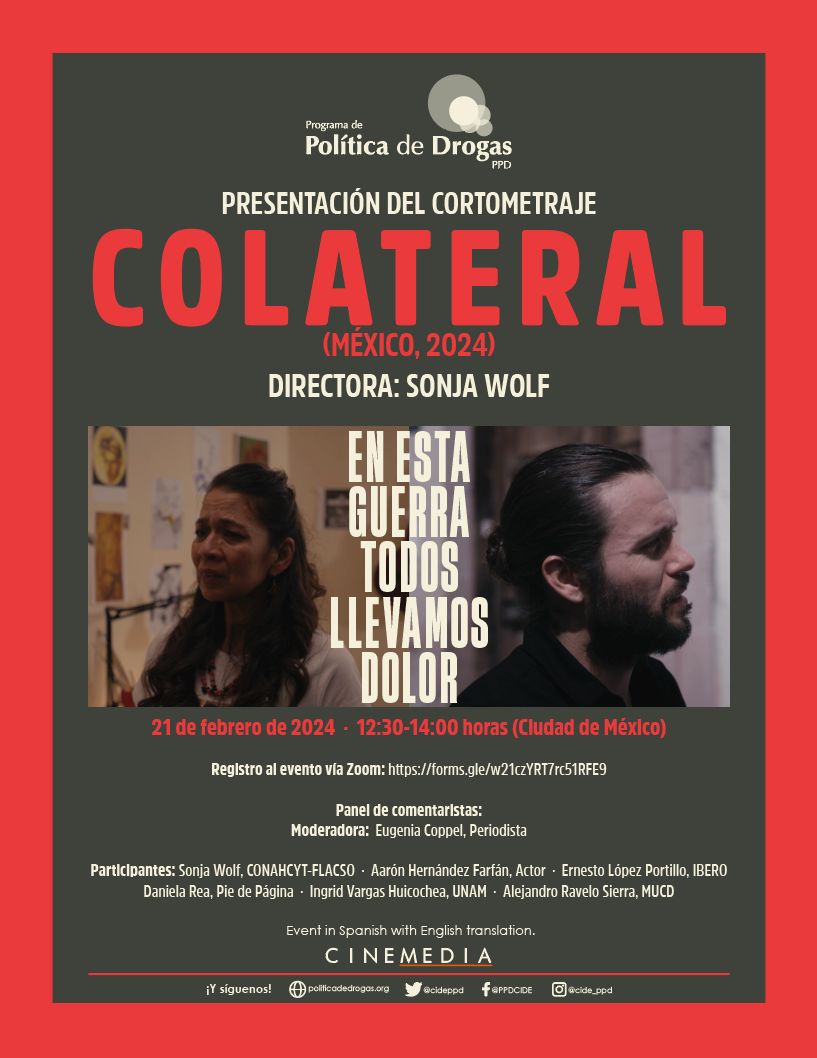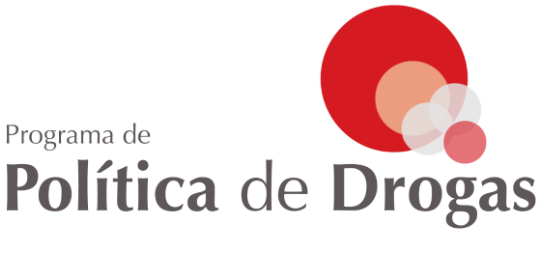Presentación de cortometraje "COLATERAL"

Mental Health in the Context of Mexico’s “War on Drugs”
Final Project Report
Project Coordinator: Sonja Wolf
- Project Aims and Contribution
The project was conceived as a social impact project that had the potential to contribute to discussions of victimization and mental health in the context of Mexico’s “war on drugs.” The project is rooted in civilian perceptions of members of the Armed Forces generally, and concerns about military participation in public security and military abuses in Mexico specifically.
The military uniform conveys both an ability and a permission to carry out state violence, if necessary lethal, for the purpose of national defense. Civilians may perceive soldiers as heroes who are prepared to give their own life to protect citizens, or as perpetrators who kill or otherwise harm perceived enemies. While the military uniform conjures preconceived ideas of soldiers’ identity, there appears to be little interest in seeing and understanding the human beings who inhabit the military uniform. That is, few efforts are made to comprehend how the violence soldiers commit affects them physically and psychologically. The fact that the Armed Forces are typically opaque and unaccountable institutions does not facilitate such inquiries.
Mexico’s “war on drugs,” launched in late 2006, has seen the fragmentation and proliferation of criminal groups as well as an increase in different expressions of violence, notably homicides and disappearances. Studies have extensively documented the impact of the violence on the civilian population, including displacement and trauma. Soldiers have been involved in widespread human rights abuses, but little is known about why they commit violence against innocent civilians. Interviews with soldiers conducted for the Drug Policy Program shed light on the limitations of military training and the difficulties of identifying enemies in a non-conventional war, that is, an armed conflict in densely-populated urban areas where combatants are hard to distinguish from the civilian population.
While the interviews did not explicitly address mental health issues, soldiers’ responses indicate that the “war on drugs” entails a high degree of uncertainty and stress. The war’s unclear objectives and open-ended nature, fear of a nebulous enemy, insufficient rest as well as the reality of war, lead to physical and mental exhaustion and can impair soldiers’ service-related performance. More recent interview data collected by the project coordinator suggests that military burnout has worsened under the López Obrador administration, which has relied on uniformed personnel for the President’s major infrastructure works.
The project was designed to generate, as the main product, a fiction short film that showed how Mexico’s “war on drugs” affects not only civilians, but also soldiers. A documentary film was not considered feasible, since Mexico’s Armed Forces do not typically respond to research requests, and it was unlikely that any of its members would have wanted to appear on screen. A fictional work offered greater freedom to explore the mental health consequences of the violence. Inspired by reality, this artistic work would be able to contribute to discussions of Mexico’s security and drug policies. As an audiovisual product, a film could also reach a wider audience and generate empathy in ways that academic research often fails to do. Empathy, after all, is essential if citizens are to learn about other people’s world and to pressure governments to implement more sustainable policies
The film is titled “Collateral” in reference to the idea of “collateral damage,” the “unavoidable” consequences of war. The movie invites audiences to ask which costs are and are not acceptable, to ask who the victims are in Mexico’s conflict and how we can respond to them with greater compassion.
- Main Activities
The project consisted of five phases: research and script development; pre-production; production; post-production; and distribution. The film production involved a team comprising five actors from different parts of Mexico, as well as three voice narrators and 24 crew members from Aguascalientes. The project coordinator was responsible for researching, scriptwriting, and directing the film as well as its promotion and distribution.
The research entailed desk research and qualitative interviews with a former member of Mexico’s Navel Force (SEMAR), psychologists, and a journalist. The script was developed and revised over several months and subsequently copyrighted at the national and international levels.
In the pre-production process, the project coordinator consulted with professionals in the film and television industry to identify a producer who would be able and willing to take on a project of this nature. The producer who was eventually hired has been involved in scriptwriting and short film productions, but has more extensive experience in commercial productions for television and corporate clients. After completing this essential first step, the director collected reference images (cinematography; actors; hair, makeup, and costume; set), while the producer published casting calls on social media platforms. Given the limited availability of suitable actors at the local level, the director also contacted actor representatives in Mexico City to invite specific actors to collaborate in the project. The virtual and in-person auditions were attended by 40 actors. The production team selected five actors as cast and two actors for off-screen narration.
The director held extensive conversations and script readings with the actors, since there would be essentially no rehearsal time during the shooting. During this period, voice artists recorded the off-screen narration for the film. The producer drafted the budget and assembled the crew. Heads of department were hired directly based on their work as practitioners and/or film school instructors; other crew members were hired from among film degree students at the Autonomous University of Aguascalientes). During this phase, crew members scouted locations, did the blocking (the process of working out camera position and movement), and worked on set construction and design.
The production or shooting of the short film and the making-of took place over two days in October 2024. The set had been constructed in the producer’s film studio (the only film studio available for hire in Aguascalientes); locations included the radio studio on the local campus of the Universidad del Valle de México as well as the Aguascalientes city center. Outdoor filming required permits; some last-minute changes in the approval of the permits created complications for the filming schedule and the sound quality.
The post-production was one of the lengthier phases of the project, since the completion of the tasks depended on the limited availability of crew members. The film went through a process of editing, re-shoots, VFX (visual effects), color correction as well as dialogue mixing and sound design. The short film was generated in different formats suitable for online viewing and theatrical screenings. The film and the promotional materials (trailer, making-of, actor interviews) went through a subtitling process in Spanish and English; the film itself was made available with open captions and closed caption to satisfy different screening requirements. The publicity materials were also made during the post-production phase, including a press kit, the film poster, and social media banners.
The distribution began in mid-January 2024 and will continue throughout 2024. The activities in this phase are designed to raise the visibility and influence of the film. The movie was included in the IMDb film database. Promotional materials have been uploaded to dedicated YouTube and Vimeo channels and are being disseminated on social media (X/Twitter, Facebook, Instagram, and LinkedIn).
The film has so far been submitted to 72 national and international film festivals, based on a festival strategy that was elaborated earlier in the project. Film festivals are the principal mechanism to showcase short films and gain recognition which, in turn, can boost a film’s visibility and influence. Further submissions will be made in 2024 once the calls for entries have opened.
On February 21, 2024, the Drug Policy Program will host a virtual “closed-door” screening of the short film. The project coordinator will promote the organization of more private screenings while the film is in the festival circuit, since the exclusivity criteria of festivals prohibit public and theatrical screenings. During the first half of 2024, the project coordinator will seek opportunities to insert the film in discussions of Mexico’s security policy in the context of the presidential election.
Enlace directo aquí
Más Vistos
- La vida con el narco. Relatos de vidas silenciadas
- Blood Gun Money: How America Arms Gangs and Cartels
- Presentación del Inventario Nacional de lo Militarizado
- Presentación del libro “Vidas en Custodia. El Castigo carcelario y su...
- Presentación de la “Base de Datos de Presencia Criminal en México 2020...

